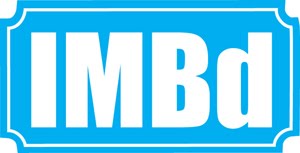*1/2 out of ****
Let’s wind the clocks back about eight years: Marvel had
just given us a little surprise hit called Iron Man, which was good fun, but
it wasn’t going to even touch the DC/Warner Brothers Batman epic due that July, The Dark Knight. What happened?
Today, the Disney-owned Marvel Studios releases multiple
movies a year, which are connected by taking place in the same universe as that
first Iron Man movie. I don’t think that any of them are great, but nearly all
of them know how to have a good time. Meanwhile DC/Warner seems to be under the
impression that they need to take their dark and serious shtick that made
Christopher Nolan’s self-contained Dark Knight Trilogy so successful and apply
it to the universe-building business model that makes Marvel a blockbuster
powerhouse.
If you don’t count a failed launch via The Green Lantern, this started with the financial success of 2013’s Man of Steel – a movie I loathed
for sucking all the charm out of Superman. It continues now with Batman v Superman: Dawn of Justice, where Batman’s inclusion fits into director Zack Snyder and co-writer David S. Goyer’s grim world more than Superman does. I
wish I could say that this makes the new movie an improvement, but, for so many
reasons, it doesn’t.
Like Man of Steel, the movie begins on a strong note, this time revisiting the most
sordid section of Man of Steel where we see the partial destruction of
Metropolis from Bruce Wayne’s point of view as one of his company towers is
crumbling in the collateral damage of a fight between Superman and General Zod.
The look on Wayne’s face says everything I would assume a common citizen to
think of Superman, who sure picked a bad day to reveal himself to the world.
Cut to present, where the young industrial billionaire Lex Luthor is attempting to influence a political movement against Superman while
hoping to access restricted alien technology found during the events of the
last movie. Meanwhile, Superman is hypocritically disapproving of Batman’s violent
ethics when fighting crime. Batman starts hatching a plan to destroy the
Kryptonian strongman for being a threat to the human race. More subplots ensue.
I gave the first chunk of this movie every ounce of my
attention in order to make sense of its convoluted plotting until I surrendered
in a state of bored confusion. There are gorgeous moments, quite often in segments that turn out to be dream sequences and I wonder if Snyder is using them because he embraces any opportunity show his talents at abstract imagery.
The story is under the influence of conflicting minds and
the business obligation to establish future DC Universe installments, which I’m
hoping will never happen - if they’re to be anything like this movie’s blatant,
gloomy allegories for fighting terrorism –a theme I grew tired of seeing in
escapist cinema a long time ago.
Ben Affleck is a very good Bruce Wayne/Batman and Henry Cavill is still a good looking Superman, even if he has yet to discover the
character; Amy Adams is a great actress who continues to make a terrible Lois Lane; Gal Gadot, as Wonder Woman, barely makes an impression in the monotonous
finale; and Jesse Eisenberg's Lex Luthor possesses most of this film’s
personality: An eccentric, loud, pseudo-intellectual force
of destruction with no clear motive.
When talking movies with friends, I’ve often defended Zack
Snyder for his unique visual style, which felt lost in Man of Steel, but
feels slightly recovered in this movie. Sadly, the common criticism of Snyder
having a superficial understanding of substance, storytelling, and how to make action
scenes engaging is adding up in ways that make him look really shallow in my
eyes now.
A lot of fanboys - and girls - are split on Snyder's work with films like Watchmen and 300, but I enjoyed them during a golden time for Warner, when they treated their comic book properties, through DC, as worlds of their own that each promised a compelling story through rich filmmaking. This was also true of V For Vendetta, Batman Begins and The Dark Knight.
The studio that took the comic book movie to its greatest
cinematic heights has sacrificed so many things that matter in entertainment. Despite
the #1 opening weekend at the box office, they may be about to pay the price.
I, like so many others, will not be going back to see Batman V Superman: Dawn
of Justice again.
But you don't need to take my word for it...
But you don't need to take my word for it...




